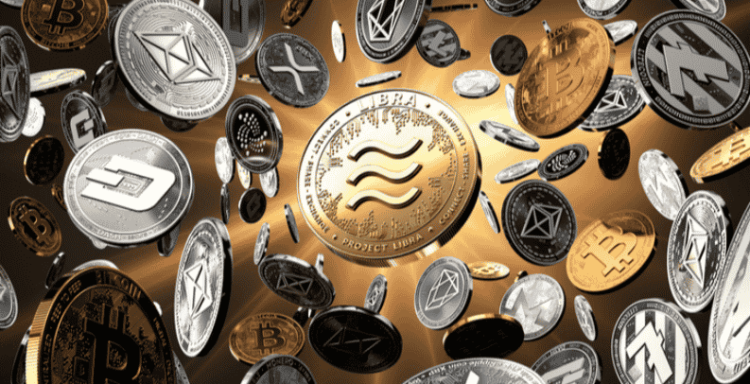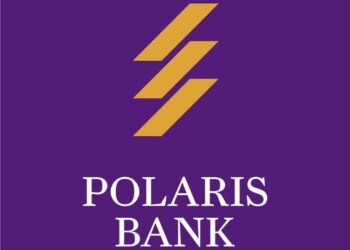Top 5 cryptocurrencies to watch in June 2022 can be accessed below.
Glamtush understands that the cryptocurrency space in the month of May will definitely be remembered by the cryptocurrency community as the market was plagued with a rollercoaster of negative headlines that cast a dark shadow over the future of the market and investor confidence.
The month ended up being a bearish month for the cryptocurrency space as the flagship cryptocurrency asset, Bitcoin traded as low as $26,350.49 on the 12th day of the month, marking a new yearly low for the asset. It began trading from $37,714.88 at the beginning of the month and ultimately ended the month at $31,792.31, representing a 15.70% loss. Bitcoin traded at a peak of $39,902.95 at the beginning of the month, however, in the last two weeks of the month, we witnessed a significant decline in the market that sent Bitcoin to trade below the $30,000 zone. Bitcoin’s market dominance ended the month at 46.24%, up by 3.98% from the 42.26% seen at the beginning of the month.
The cryptocurrency market capitalization, as you would expect, declined by 24.34% for the month, from $1.73 trillion at the start of the month, to end the month at $1.31 trillion. The cryptocurrency market capitalization traded as low as $1.15 trillion in the month of May, with many fearing the market could be losing its trillion-dollar status.
The altcoin market experienced similar declines, losing 28.92% in May, from approximately $988 billion to currently stand at $702 billion at the end of the month. During the month of May, we saw the altcoin market capitalization trade as low as $621 billion.
Highlights for the month of May
The month started with news that more than $1.6 billion Have Been Stolen on DeFi Platforms so far in 2022, surpassing the total amount stolen in 2020 and 2021 combined. Analysis from blockchain security firm CertiK revealed the statistics showing the month of March having the most value stolen at $719.2 million, over $200 million more than what was stolen in all of 2020. The March figure is as a result of the Ronin Bridge exploit where the hackers stole over $600 million worth of crypto, from the world’s largest Play-to-Earn (P2E) platform.
After that, MicroStrategy, one of the largest institutional holders of Bitcoin on its balance sheet, took a non-cash digital asset impairment charge of $170.1 million in the first quarter of 2022. This is up 16% from $146.6 million recorded in the previous quarter (Q4, 2021). The company still holds a total of 129,218 bitcoins, acquired for $3.97 billion, reflecting an average cost per bitcoin of approximately $30,700, according to company reports.
The month also saw Binance, the world’s largest cryptocurrency exchange by trading volume, has been granted approval from French regulators to operate its cryptocurrency exchange in France. Binance is now listed as a registered digital asset service provider by the French stock market watchdog AMF (Autorité des marchés financiers). This means that the crypto exchange can offer trading and custody services for bitcoin and other cryptocurrencies. Binance is the largest crypto exchange globally. The company handles spot trading volumes of more than $18 billion and more than $60 billion in derivatives volume in a single day, according to data from CoinMarketCap.
We also saw a report from Chainalysis, that explained that investors of Non-Fungible Tokens (NFTs) have already sent more than $37 billion in value to NFT marketplaces this year as of May 1st, 2021. The figure is on track to equal and surpass the $40 billion sent in all of 2021. The report explains that since the beginning of last year, NFT transaction volume has grown considerably, but the overall growth of the industry has been inconsistent. It reads, “NFTs saw explosive growth in 2021, but this growth hasn’t been consistent and has leveled off so far in 2022.”
The major talk of the month was the collapse of the Terra blockchain and death of its native token LUNA and its programmable stablecoin, UST. The collapse saw more than $60 billion in market capitalization lost from both LUNA and UST, caused by the fact that the Bitcoin backed programmable stablecoin lots its peg to the U.S. dollar. This had a ripple effect on the main market, thereby intensifying the selloff we saw in May that nearly saw the market lose its trillion-dollar status.
With the current bearish trend seen in the market, here is a look at 5 cryptocurrencies investors should watch out for in June 2022:
Bitcoin’s BTC
Although we are seeing a sell-off in the cryptocurrency space, there is still a lot of net accumulation from Bitcoin whales. The trend that began in February, has continued into May 2022 as on-chain data from Glassnode suggest that investors are taking advantage of the current price to accumulate Bitcoin.
The report by Glassnode explained that unlike the selloffs that occurred in March 2020 and November 2018, which were followed by an upswing in on-chain activity that “initiated the subsequent bull runs,” the most recent sell-off has yet to “inspire an influx of new users into the space.”
According to Glassnode analysts, they believe this suggests that the current activity/buying spree we are seeing in the market is predominantly being driven by hodlers (Individuals who have previously bought cryptocurrency and are holding their positions for the long term). While many investors are disinterested in BTC’s sideways price action, contrarian investors view it as an opportunity to accumulate, a point evidenced by the Bitcoin accumulation trend score which “has returned a near perfect score above 0.9” for the past two weeks, according to Glassnode.
Also, according to Glassnode, high scores on this metric during bearish trends “generally trigger after a very significant correction in price as investor psychology shifts from uncertainty to value accumulation.” A closer look at the data provided by Glassnode shows that the recent accumulation has been largely driven by entities with less than 100 BTC and entities with more than 10,000 BTC.
Bitcoin ended the month trading $31,792.31.
Cardano’s ADA
Cardano is one of the biggest blockchains to successfully use a proof-of-stake consensus mechanism, which is less energy intensive than the proof-of-work algorithm relied upon by Bitcoin. Although the much larger Ethereum is going to be upgrading to PoS, this transition is only going to take place gradually.
Cardano has so far, proven to be what it promised to be. The network, as of the time of this writing, currently leads Ethereum blockchains in terms of transaction volume in the last 24 hours. The platform recorded a $14.24 billion worth of transactions compared to the $5.80 billion on Ethereum, according to data from Messari. This has been the trend for the past 3 months as the blockchain offers significantly less transaction fees than Bitcoin and Ethereum.
Also, data from DeFi Llama shows that the Cardano blockchain is listing more and more DeFi platforms on its blockchain system. In the last three months, the platform has added the likes of Minswap, WingRiders, ADAX Pro, MuesliSwap and so on, into its ever-evolving ecosystem. There are also more and more projects that are being built on the platform.
ADA ended the month trading $0.6253.
Ethereum’s Ether
The price of Ether took a nosedive in May, particularly on the back of various reports that suggest the lack of interest in the token from institutional investors and more attention given to other Ethereum competitors like Solana or Avalanche.
The report revealed that institutional investors have been accumulating Ethereum competitor tokens as they loaded up on $3.5 million worth of Avalanche (AVAX), Solana (SOL), Terra (LUNA) and Algorand (ALGO) funds while capital outflows from Ether products totaled $16.9 million towards the end of April.
However, there is a semblance of hope for the second largest cryptocurrency by market capitalization. The Ropsten testnet on the Ethereum network is ready to set the stage for the “first dress rehearsal” of the Merge to adopt the proof-of-stake (PoS) consensus mechanism. Core Ethereum developer Tim Beiko announced on Tuesday that a new Beacon Chain for Ropsten has been launched. It will serve as the precursor for the final test Merge, which is expected to be on June 8th.
The Ropsten testnet is one of many testing grounds for Ethereum clients. It mimics aspects of the Ethereum mainnet including the use of a valueless form of Ether (ETH) to execute transactions and the coding environment, but changes made there do not affect the mainnet. When Ropsten finally undergoes its own Merge, it will be a first look at what the real Merge may look like on the Ethereum mainnet. The resulting effects on the testnet, its applications and clients will give developers first-ever glimpses into what they can expect to happen for the mainnet Merge and how to prevent problems from arising.
The Merge is one of the most highly anticipated events in the history of the Ethereum network because it will accomplish several goals. It will convert Ethereum’s PoW consensus algorithm to PoS, will make the network vastly more energy-efficient and change the name of the network to the Consensus Layer, formerly known as Eth2.
Ether ended the month trading $1,942.33.
Ellipsis Finance’s EPX
Ellipsis Finance is an authorized fork of Curve Finance on the BNB chain. It is an Automated Market Maker (AMM) or exchange that lets users and other decentralized protocols exchange tokens (BUSD to USDC, for example) with low fees and low slippage.
Unlike exchanges that match a buyer and a seller, Ellipsis uses liquidity pools. To achieve successful exchange volume and low slippage, Ellipsis needs a high amount of liquidity (tokens) in the pools. The platform allows for stable coins swap with very low slippage and minimal fees. To incentivize liquidity to deposit in Ellipsis pools, Ellipsis offers rewards in EPX tokens, its native token, to liquidity providers.
As previously mentioned, Ellipsis (EPX) is the native token for Ellipsis. It has four main uses which are; As a reward for Liquidity Providers, for voting on pool incentives, for locking platform fees and for locking to boost Liquidity Provider rewards.
As a result of this agreement between Curve and Ellipsis, veCRV holders will receive 25% of the supply over the next 12 months. Curve Finance will provide support to the Ellipsis team. Ellipsis in turn, have pledged to commit to Curve’s core values of which are; no deposit or withdrawal fees, no lock ups on liquidity, and extremely efficient stable coin swaps.
The platform recently launched Ellipsis 2.0. While the first Version has been providing Curve’s StableSwap protocol to users on the BNB chain, this new version will bring other dimensions of Curve to Ellipsis. There include; Reward gauge voting, Reward weight voting and Reward boost.
To add, token holders will be able to lock their tokens for vote weight and use that weight to vote on adding rewards to pools, and on which pool they would like to direct rewards. A user’s locked tokens will also determine the level of APR boost to apply to their Liquidity Providing rewards.
EPX ended the month trading $0.001254.
Tron’s TRX
TRON (TRX) is a decentralized blockchain-based operating system developed by the Tron Foundation and launched in 2017. Originally TRX tokens were ERC-20-based tokens deployed on Ethereum, but a year later they were moved to their own network.
The TRON software supports smart contracts, various kinds of blockchain systems, and decentralized applications aka dApps. The cryptocurrency platform uses a transaction model similar to Bitcoin (BTC), namely UTXO. Transactions take place in a public ledger, where users can track the history of operations.
Therefore, the platform was built to create a decentralized internet and serves as a tool for developers to create dApps, acting as an alternative to Ethereum. Anyone can create dApps on the TRON network, offer content, and in return receive digital assets as compensation for their efforts. The ability to create content and share it openly without hesitation regarding transaction fees is an undeniable advantage of the blockchain.
The price of Tron’s native token, TRX, has been growing as a result of the growth of its programmable stablecoin, USDD. Amid uncertainty over the reliability of stablecoins and bearish trends in the crypto market, one stablecoin, USDD, continues to shine.
USDD, the decentralized algorithmic stablecoin based on TRON, is on a growth spree despite an overall cryptocurrency market crash. The market cap of the stablecoin has been growing leaps and bounds ever since it launched earlier this month.
TRX ended the month trading $0.08419.























